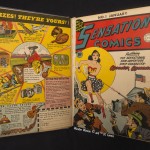The story of the last Passenger Pigeon and the disappearance of the Great Auk, Carolina Parakeet, and Heath Hen reveal the fragile connections between species and their environment. To help tell their story, the Smithsonian Libraries, Biodiversity Heritage Library, and the National Museum of Natural History have curated a joint exhibit entitled Once There Were Billions: Vanished Birds of North America which opened June 24 in the National Museum of Natural History.
Two hundred years ago, the passenger pigeon (Ectopistes migratorius) was the most abundant bird species in North America. A population numbering in the billions, as much as 40% of all land birds on the continent shared the same genome as Martha. Migrating flocks were so large that they literally blocked out the sky, stretching up to a mile wide and 300 miles long and taking 14 hours to pass a single point. Flocks were so densely packed that a single shot could bring down dozens of birds. The beat of up to 3.5 billion pairs of wings literally created its own cold front below, and those unaccustomed to the marvel feared the end of the world was upon them.




